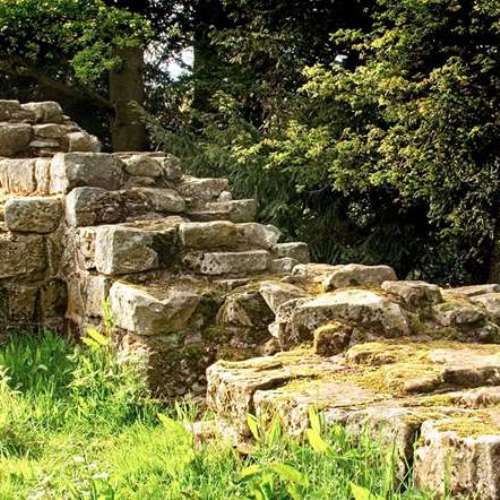Brunton Turret Fort NE46 4EJ
Entry: Free for EH members
Open: seasonal - check website
Dogs: on leads
Reviews: 0
History:
The Romans built Brunton Turret (turret 26B) as part of the wall begun on the orders of Emperor Hadrian around AD 122 to define the north-west boundary of their empire. Turrets like Brunton were built into the Wall, two to every Roman mile, for small groups of soldiers to shelter in and keep watch. Today, Brunton Turret stands up to about 2.5 metres high and is preserved as part of a 69-metre section of Hadrian’s Wall near Chesters Roman Fort.
The original design for Hadrian’s Wall required a continuous ‘curtain’ wall and V-shaped ditch to run 80 Roman miles (117.5km) from Wallsend in the east to Burgh-by-Sands in the west. About 160 turrets were built two to every Roman mile (about 1.48km) along it, providing vantage points to monitor the landscape.
Pairs of turrets were positioned equidistantly between larger fortlets, known as milecastles, where garrisons of up to about 30 soldiers guarded gates that allowed travel through the Wall. Shortly after work on the Wall started, large forts such as Chesters were added to the line of the Wall to house greater numbers of soldiers.
Turrets were typically about 6 metres square externally, recessed into the thickness of the Wall, and entered by a door in the south wall. Their full height and design above the ground floor is uncertain. They may have had an open observation platform with a parapet, but in the damp conditions of northern Britannia they may have had pitched roofs, covered with tiles, thatch or shingles. The evidence differs from one turret to another, and roof construction may have varied over the centuries of occupation.
Items such as gaming counters and cooking utensils have been found in turrets, showing that they provided shelter where small groups of soldiers could cook, sleep and relax during their periods of watch and patrol on the Wall.
Using a numbering system introduced in 1930, milecastles are numbered 1 to 80 from east to west. Each pair of turrets takes the number of the nearest milecastle to the east, ‘a’ for the eastern turret and ‘b’ for the western one.
Brunton follows the usual turret design, with Hadrian’s Wall forming its north wall. A small door at the base of the turret offered access to a ground-floor room and steps to a further floor above. The upper sections of the turret walls do not survive, but it is likely that there was access to a wall-walk. Above that, the turret had either an open platform or a roof. The worn threshold and pivot for the ground-floor door, along with grooves for the door jambs, can still be seen in the south wall.
Although Brunton follows the standard plan, there are subtle differences here that provide clues as to how Hadrian’s Wall was built. Unusually, the ‘curtain’ wall is a different thickness on each side of the turret. Turrets were built before the Wall itself and were made with short ‘wing’ walls ready to be incorporated within it. But before the section of Wall to the east was completed, the design of the Wall was changed: the builders were ordered to narrow it from 3 metres to 1.8 metres thick. This meant that part of the thickness of the original 3-metre wing wall to the east was redundant and remained exposed.
Dog Friendly:
Dogs allowed on lead across the site
Entry Charge:
Free for everyone
Parking:
Parking at Chesters Roman Fort
Facilities:
No facilities at Turret, use Chesters Roman Fort facilities
Contact:
Website: www.english-heritage.org.uk
Tel: 0370 3331181

